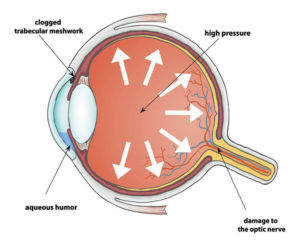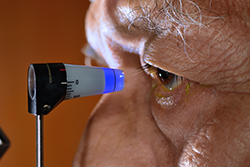Glaucoma is the second leading cause of blindness. Sometimes called the silent thief of sight, glaucoma can damage your vision so gradually you don’t notice any loss of vision until the disease is at an advanced stage.
Vision experts believe that half of those affected by glaucoma may not know it since there are usually no symptoms in its early stages. By the time an individual notices something is wrong, the disease has already caused considerable damage.

Vision lost to glaucoma cannot be regained. Although there is no cure, medications and surgery can help slow the disease’s progression.
What is Glaucoma?
Glaucoma is actually a group of eye diseases that lead to damage of the optic nerve (the bundle of nerve fibers that carries information from the eye to the brain), which can then lead to vision loss and possibly blindness.
Optic nerve damage usually occurs in the presence of high eye (intraocular) pressure.
What are the Types of Glaucoma?
There are many types of glaucoma, but the two most common types are open-angle glaucoma and closed-angle (angle-closure) glaucoma.
- Open-angle glaucoma: (also called primary open-angle glaucoma and chronic glaucoma) accounts for 90 percent of all glaucoma cases and occurs when the trabecular meshwork becomes blocked and the fluid can’t get to the normal drainage canals. This blockage results in fluid build-up and increased intraocular pressure. The fluid build-up happens gradually.
- Closed-angle glaucoma (also called acute glaucoma or angle-closure glaucoma), accounts for about 9 percent of all glaucoma cases and occurs when the opening between the cornea and iris narrows, such that the fluid cannot get to the trabecular meshwork and normal drainage channels. This narrowing results in fluid build-up and intraocular pressure. The fluid build-up happens very quickly.
People at the Highest Risk for Glaucoma are Those With Any of the Following:
- Age older than 40
- African-American race
- Family members who have (or had) the disease
- Farsightedness or nearsightedness
- Diabetes
- Long-term use of corticosteroid drugs
- Previous eye injury
Glaucoma is Generally a Slow Progressing Eye Disease
These are symptoms one may encounter as it progresses:
- Tiny blind spots appear at the edges of the visual field (peripheral or side vision) that slowly get larger and spread
- Blurred vision
- The appearance of colored halos around lights
- Adjustment problems when entering a dark room
- Repeated difficulties that new eyeglass prescriptions do not help
- Peripheral (side) vision is decreasing
The Symptoms of Closed-Angle Glaucoma are:
- Severely blurred vision
- Severe eye and head pain
- Nausea or vomiting
- The appearance of rainbow-colored halos around bright lights
- Rapid loss of vision

Treatment
 When deciding on a treatment option, Dr. McMickle will take into account the unique aspects of each person’s case, including the severity of the disease, response to medication, and other health issues.
When deciding on a treatment option, Dr. McMickle will take into account the unique aspects of each person’s case, including the severity of the disease, response to medication, and other health issues.
Eye Drops
The most common treatment for glaucoma is eye drops. There are a number of different categories of eye drops, but all are used to either decrease the amount of fluid in the eye or improve its outward flow.
Sometimes a combination of eye drops will be prescribed. People using these medications should be aware of their purpose and potential side effects.
Dr. McMickle will decide which medications are best suited for each patient based on the individual case of glaucoma, medical history, and current medication regimen.
Laser Surgery
Trabeculoplasty is often used to treat open-angle glaucoma. In argon laser trabeculoplasty (ALT), a high-energy laser is aimed at the trabecular meshwork to open areas in these clogged canals.
These openings allow fluid to bypass drainage canals and flow out of the eye. In selective laser trabeculoplasty (SLT) a low-energy laser treats specific cells in the trabecular meshwork.
Because it affects only certain cells without causing collateral tissue damage, SLT can potentially be repeated.
Laser peripheral iridotomy (LPI) is frequently used to treat closed-angle glaucoma, in which the angle between the iris and the cornea is too small and blocks fluid flow out of the eye. In LPI, a laser creates a small hole in the iris to allow fluid drainage.
Cyclophotocoagulation is usually used to treat more aggressive or advanced open-angle glaucoma that has not responded to other therapies.
A laser is directed through the sclera or endoscopically at the eye fluid-producing ciliary body.
This helps decrease the production of fluid and lower eye pressure. Multiple treatments are often required.
Currently, laser surgery is the most frequently used procedure to treat glaucoma.
It normally lowers eye pressure, but the length of time that pressure remains low depends on many factors, including the age of the patient, the type of glaucoma, and other medical conditions that may be present.
In many cases, continued medication is necessary, but potentially in lower amounts.

